Read this post on TravelFeed.io for the best experience
.png)
How to make the most of a city like Kyoto in an afternoon? That was the seemingly unsolvable equation we were mulling over in the train that took us from the southern city of Okayama to the cultural capital of Japan, a heaven for temple-lovers and visitors looking to immerse themselves in a more traditional side of the country. At first, we had planned to spend another two weeks in Japan and to stay in Kyoto for a good three days. Yet, in mid-March of 2020, circumstances had changed quite substantially and with our masks firmly stuck on our faces, we were heading back to France the very next day.
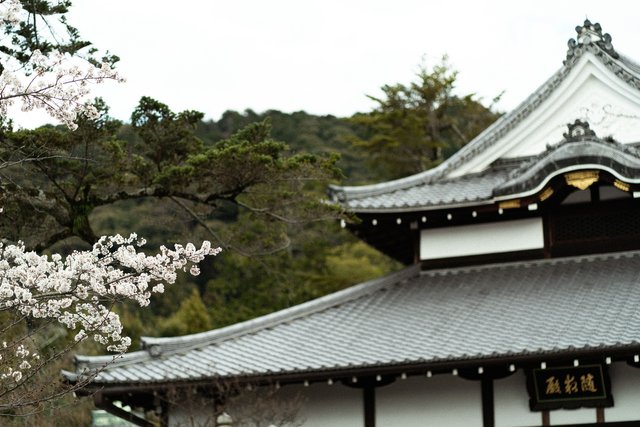
We didn’t want to leave Japan without spending at least a couple hours in one of its most beautiful cities though, especially since Hedi had never ever set foot in Kyoto before. So when we left the futuristic building of the Kyoto station, it only took us two minutes to drop our luggage at a nearby hotel, wash our hands in the lobby (obviously) and then hit the road. We had a long day ahead of us and there was no time to spare.
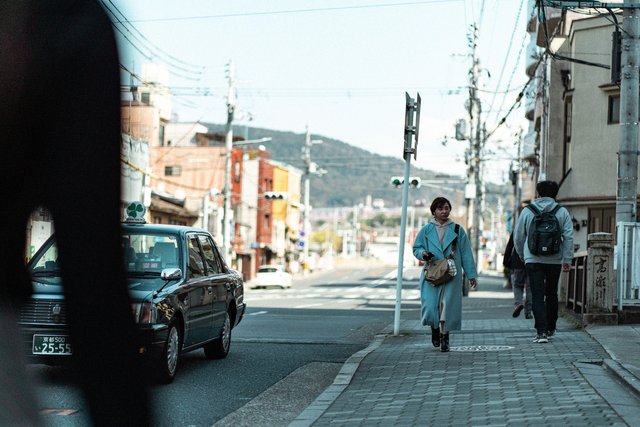
Fortunately, Kyoto was an easy enough city to navigate on foot. Our plan was to avoid relying on public transport and walk the entire time, which seemed like the best way to discover some of the city’s major sights but also be able to feel its vibe. A 20-minute walk through calm avenues and a pretty bridge crossing the Kamogawa River took us to our first destination, the Sanjusangen-dô temple. It was no surprise we were the only foreign tourists there, something that had been happening quite a lot since we had arrived in Japan a week before, but there were plenty of local tourists at the entrance, many wearing traditional kimono garbs.
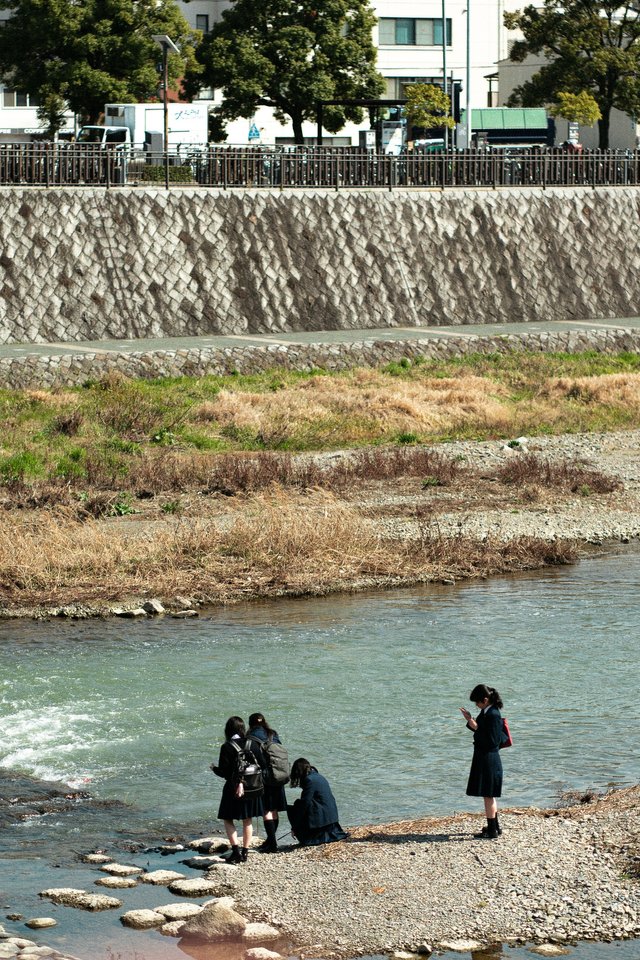
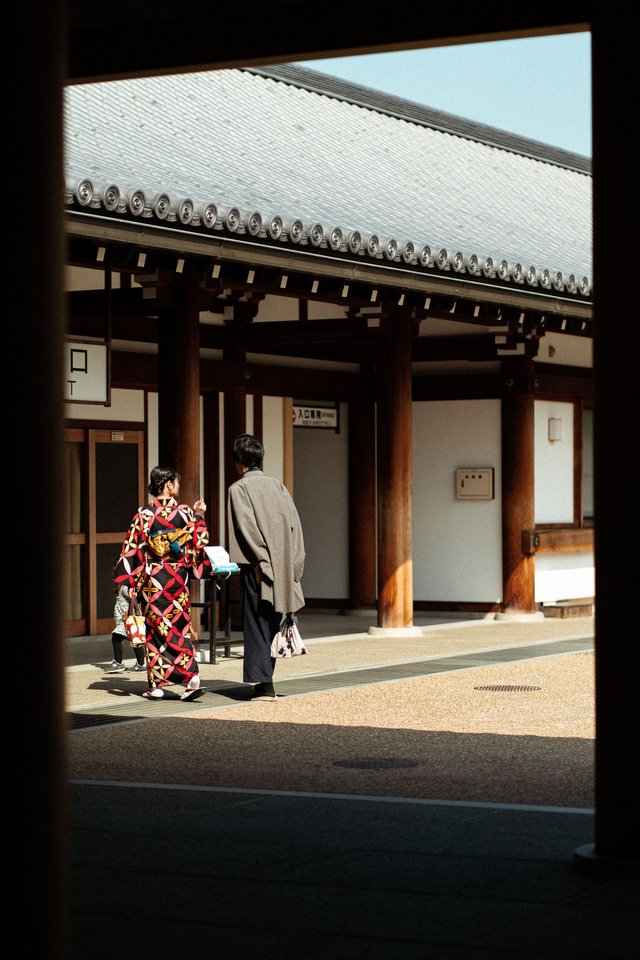
The temple was nothing spectacular from the outside but we had put it on our to-do list because of an interesting peculiarity. Indeed, the Sanjusangen-dô was known for its massive main hall housing 1001 statues and sculptures of Buddhist deities dating back to the Heian and Kamakura eras. To see them all, we had to take off our shoes and put on a pair of slippers before being allowed to roam freely in the hall and meet face to face these guardian deities.
It was plain to see why the temple’s hondô, its main hall, was a National Treasure as the gallery never seemed to end, each statue unique and different from the others, the craft of the sculptors culminating in the main deity and the striking, and honestly a bit terrifying, statues of Fûjin and Raijin, respectively the god of wind and the god of thunder. However, Sanjusangen-dô also offered a relaxing walk through its garden where, to our bliss, a few cherry blossom had started to burgeon. The forecast told us that sakura trees wouldn’t fully blossom before a few days so we were grateful to see that some trees had decided to blossom early, offering us our own little hanami experience as a parting gift.
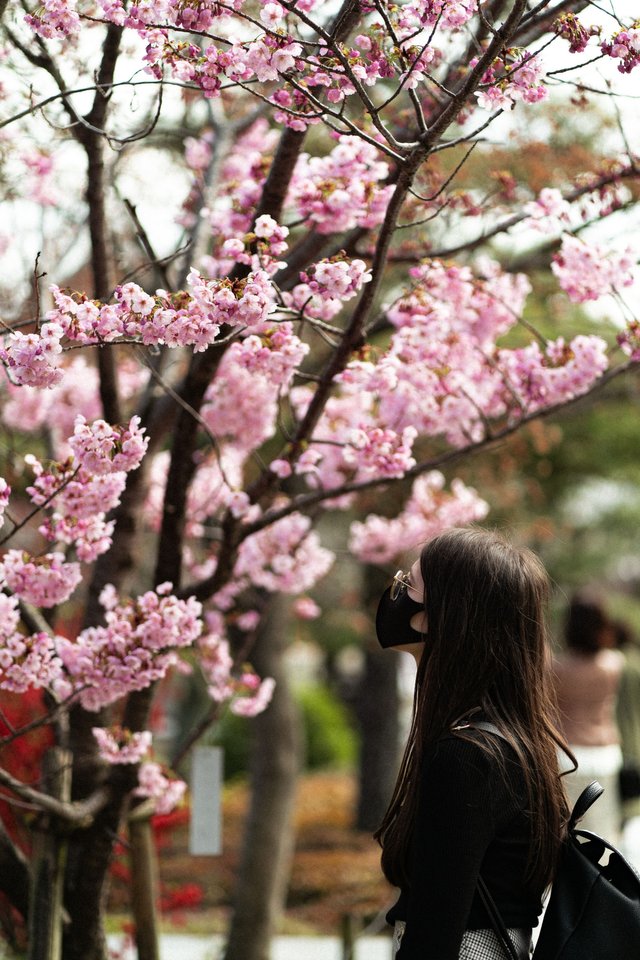
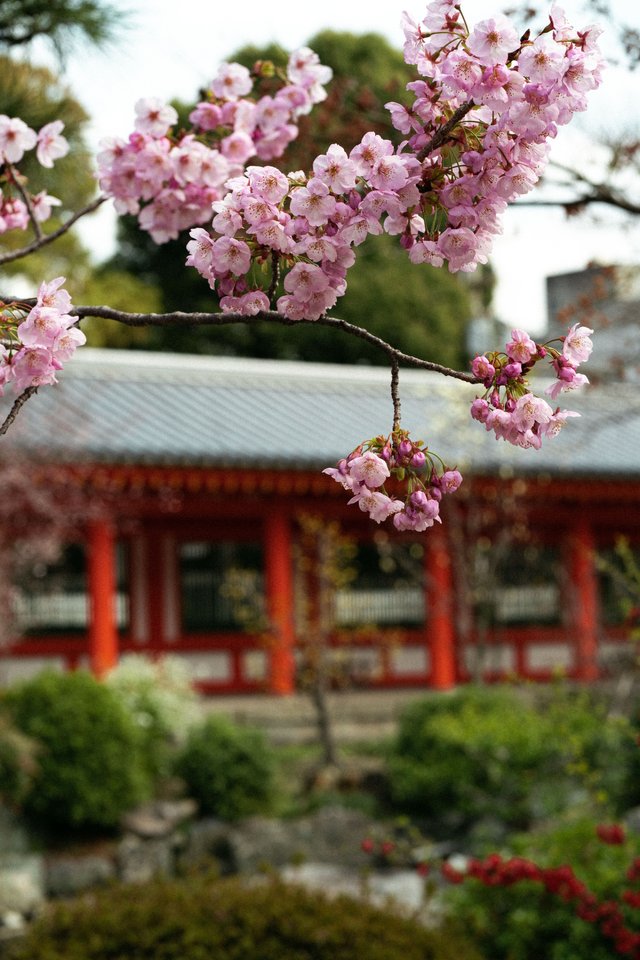
Cherry blossoms were less prominent when we arrived at the Kiyomizu-dera through an almost empty steep alley, whose souvenir shops had been all but deserted. The Temple of the Pure Waterfall Spring was one of the most popular cherry-blossom sightseeing spots in the entire city and it was a recurring theme all around us, from sakura-flavoured ice creams to sakura mochi, a sticky rice candy on a stick. Yet, sakura petals were blooming shyly at the entrance of the temple, contrary to a fully-grown plum tree, whose pristine white flowers perfectly contrasted the bright crimson of the temple’s pagoda.
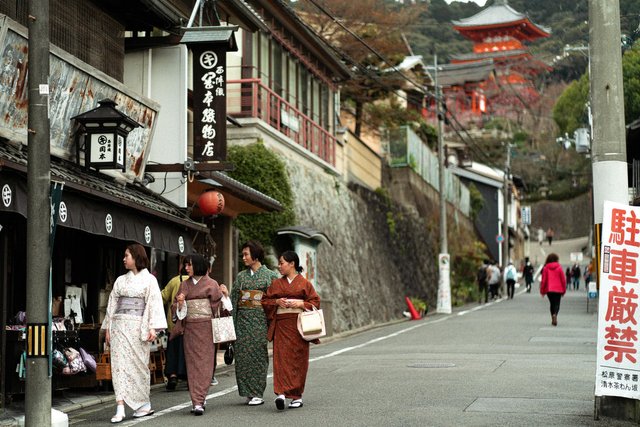
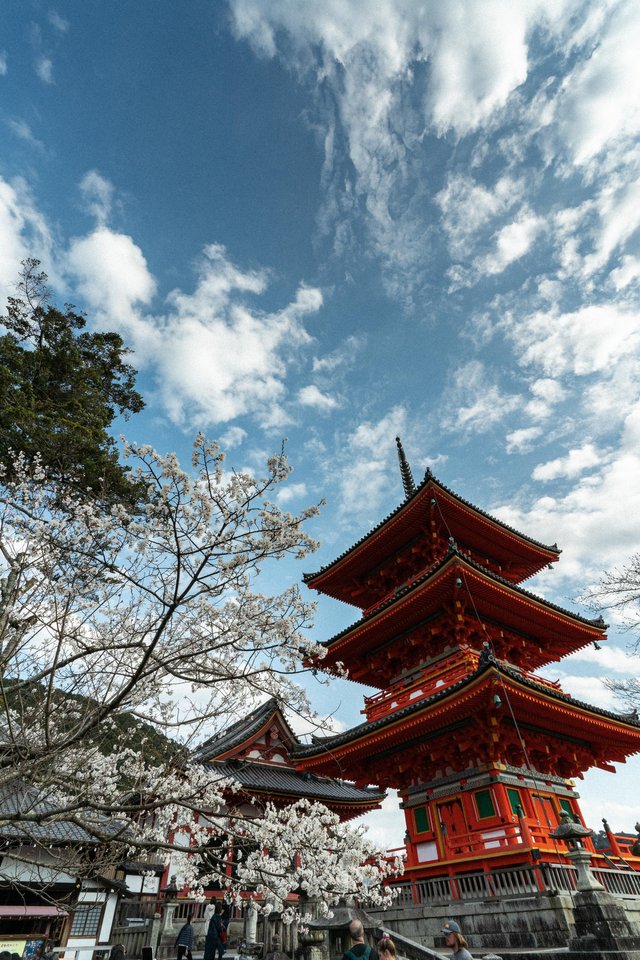
Kiyomizu-dera was packed nonetheless, its alleys bustling with kimono-dressed Japanese girls taking selfie upon selfie and locals queuing to pray inside its main hall. Cherry blossom or not, the scenery was breath-taking, as was the temple’s architecture, from the unique veranda of its main hall supported by wooden pillars to its bright red pagodas and gates adorned by colorful mythical creatures.
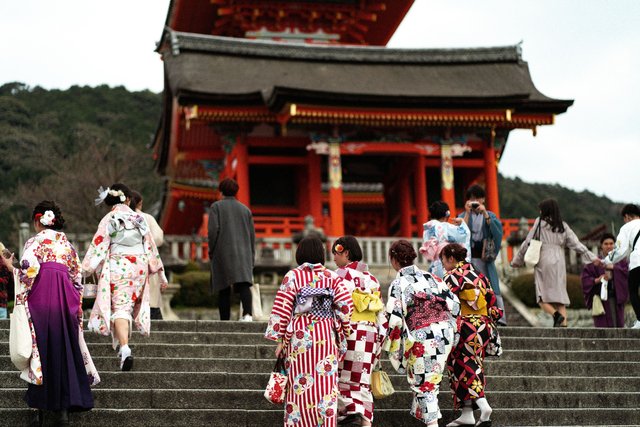

Located atop a hill, the temple offered beautiful views on the city and it was also a great starting point to discover the charming neighborhood of Sannenzaka, comprising of ancient wooden houses, lesser-known venerable temples and narrow back alleys.
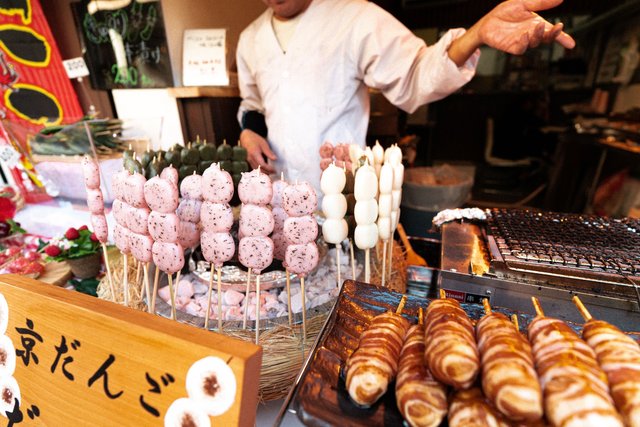
With our pink sakura-flavored mochi in one hand and a much less traditional bottle of Coke in the other, we began wandering around Sannenzaka. The area was exactly as we expected it to be, a little gem of well-preserved, homogeneous traditional architecture in the heart of the city. Japanese cities were usually a surprising, if a bit weird, combination of concrete buildings, neon signs and electric wires right next to historic, old temples and tiny wooden houses so it felt like a nice change of pace to be walking around this uniform, picture-perfect setting. A touch of the contemporary was never too far though, from the Starbucks sign hanging from an ancient house to the numerous vending machines that were so widespread in any modern Japan city.
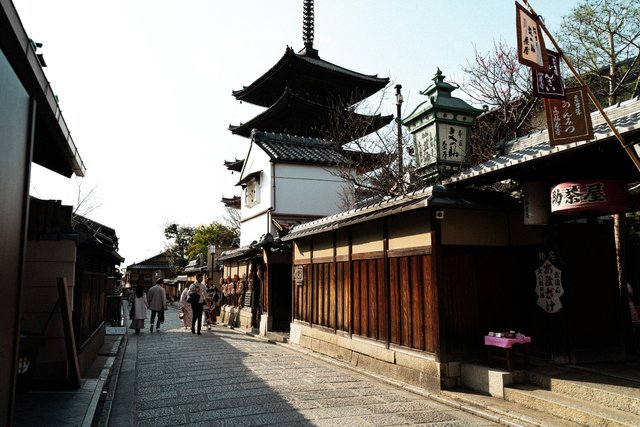
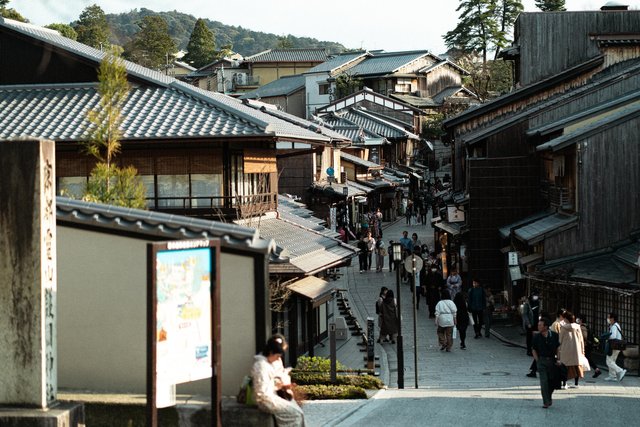
Our plan was then to head to the equally ancient and traditional neighborhood of Gion, which we eventually did after a few stops on the way. Located close to the Sannenzaka area, our path first took us to the temple of Kôdai-ji, a Buddhist peaceful haven renowned for its incredible zen gravel garden where a blossoming sakura tree was watching over an area of rainbow-like colored gravel the likes of which we had never seen. We then reached the bright red shintô temple of Yasaka, crossing through the Maruyama Park where we were greeted by a number of pretty pink petals.
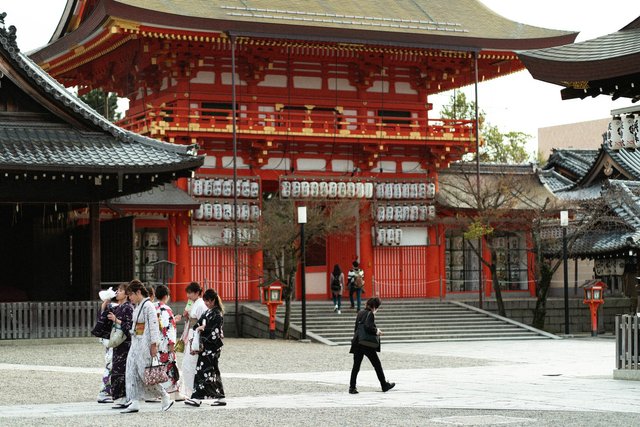
The Yasaka Jinja was considered the gateway to the Gion district as it led to the Shijo Avenue, the main street crossing the area, surrounded on all sides by red lanterns and shops, from souvenir vendors to restaurants. From the avenue, it was easy to find the famed Hanamikoji street, so popular that its residents had pushed for a recently enacted picture ban to try and curb the endless stream of visitors disturbing the street’s quietness and authenticity with their constant photo shootings. That picture ban was understandable and we could tell it was effective as our enthusiasm truly curbed when we got to the street, only able to capture its beauty in our memory.
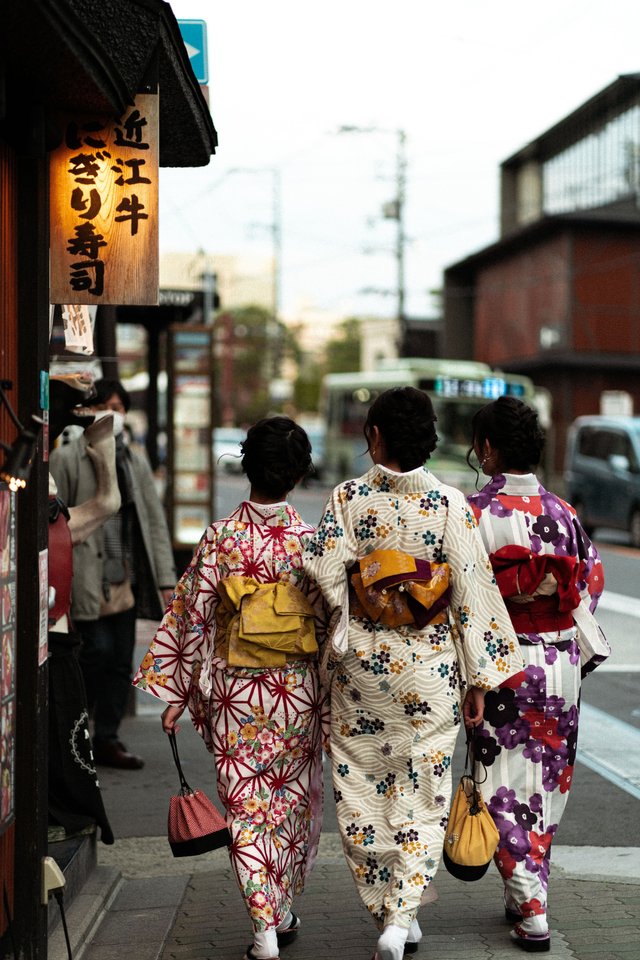
In comparison, the lesser-known and mostly empty back alleys we had walked across to get to Hanamikoji felt much more engaging and in a sense, more real. Sure, some of them weren’t as well-preserved and a few grey office buildings and gaudy karaoke parlors popped every now of then in the vicinity, not to mention the inevitable electric wires hanging all around. Yet, there was a singular Japanese beauty in the blend of chaotic urban planning and age-old architecture, in the bustling sounds of crowded avenues in the distance and the old-fashioned feel of narrow alleys, almost too small for cars, lined up with tiny ramen joints on one side and bikes resting on a wall on the other.
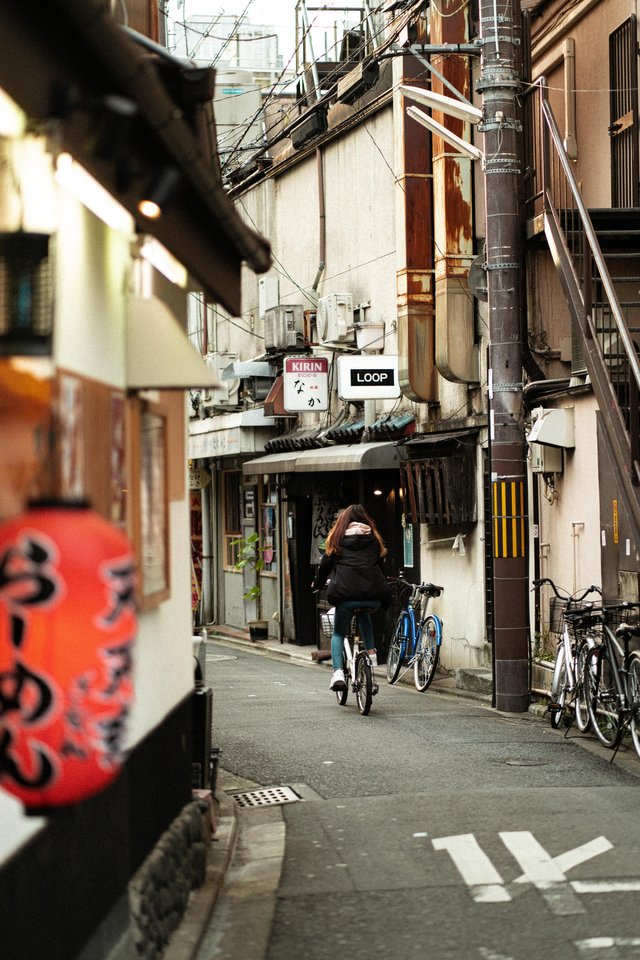

Kyoto was known as the Japanese cultural capital for a reason and we had barely scrapped the surface, even though our aching feet had done their best to let us explore some of its best parts. The next day, we reluctantly headed to the Osaka airport, knowing full well the only responsible choice in the circumstances was to go back home. What comforted us though was that we had had at least a whole afternoon to see Kyoto in all its glory, from stunning temples to blossoming cherry trees, minus the usual crowds.
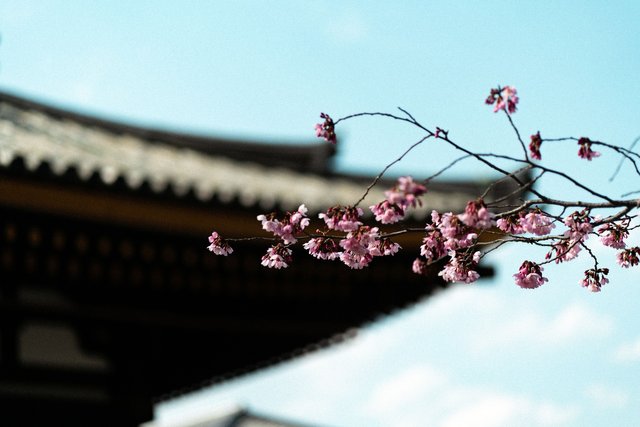
View this post on TravelFeed for the best experience.
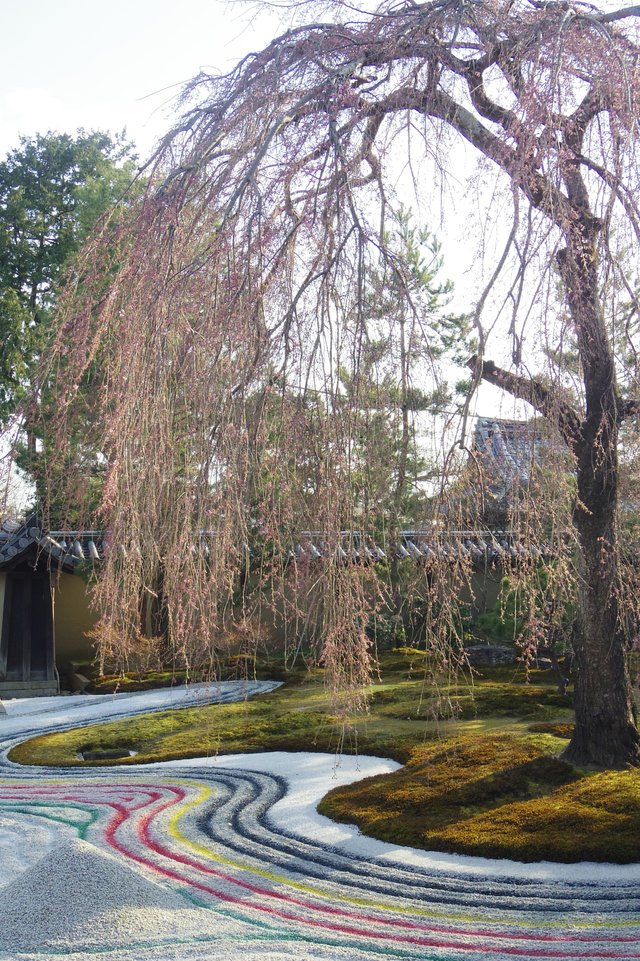
Awesome report! Kyoto is on my to-do list as well!
Downvoting a post can decrease pending rewards and make it less visible. Common reasons:
Submit
Thanks ! It's an amazing city to visit.
Downvoting a post can decrease pending rewards and make it less visible. Common reasons:
Submit
these are the reasons why we always wanted to visit japan. I really do love your photography. great shots
Downvoting a post can decrease pending rewards and make it less visible. Common reasons:
Submit
Thank you, Japan is such a photogenic place !
Downvoting a post can decrease pending rewards and make it less visible. Common reasons:
Submit
So beautiful. Upsmoked and resmoked.
See you on Smoke.io .... https://Smoke.io
A place of Love and Peace and Happiness.
Downvoting a post can decrease pending rewards and make it less visible. Common reasons:
Submit
Thanks ^^
Downvoting a post can decrease pending rewards and make it less visible. Common reasons:
Submit
Congratulations @haydae! You received the biggest smile and some love from TravelFeed! Keep up the amazing blog. 😍 Your post was also chosen as top pick of the day and is now featured on the TravelFeed.io front page.
Thanks for using TravelFeed!
@elsaenroute (TravelFeed team)
PS: You can now search for your travels on-the-go with our Android App. Download it on Google Play
Downvoting a post can decrease pending rewards and make it less visible. Common reasons:
Submit
You have been added to the @offgridlife Curation Trail on https://Steemauto.com
Downvoting a post can decrease pending rewards and make it less visible. Common reasons:
Submit